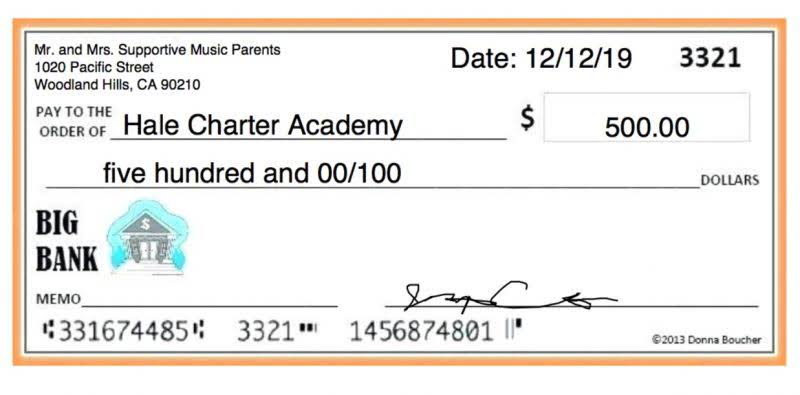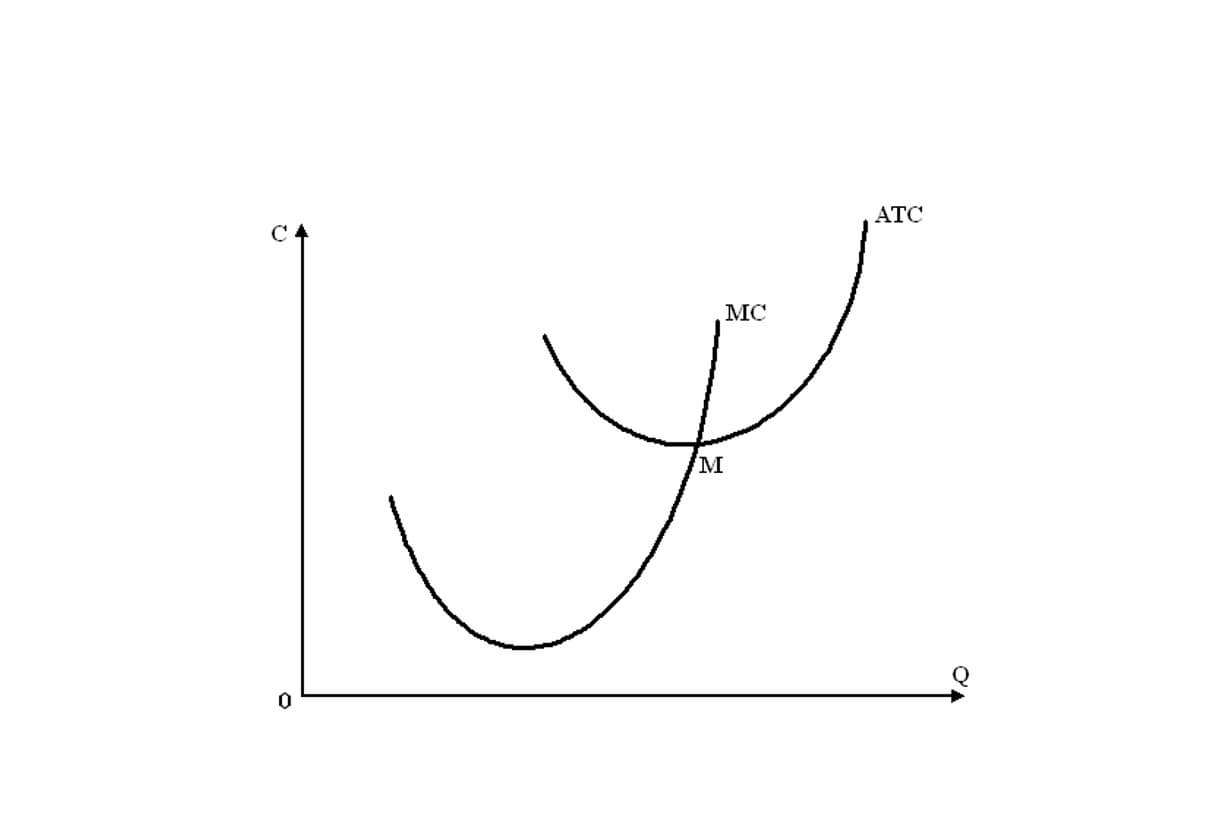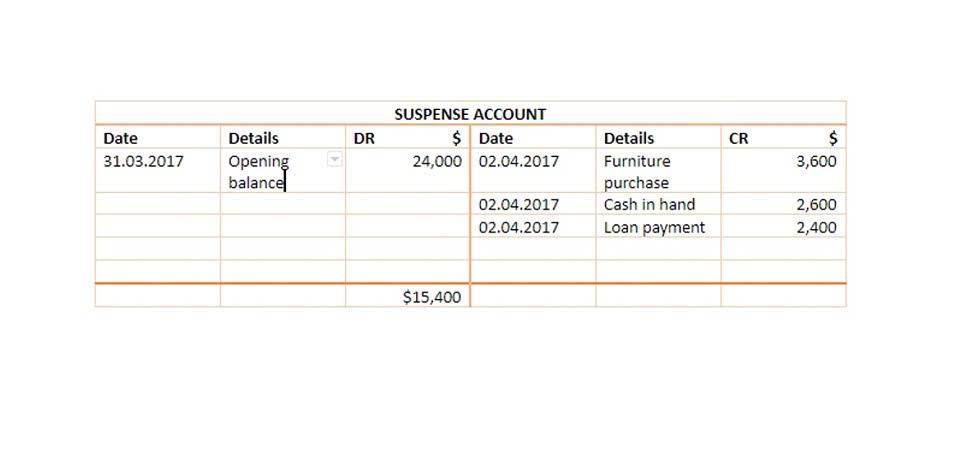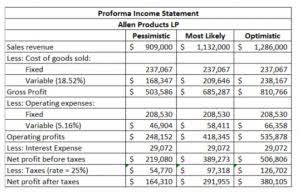What is variance analysis?
If you know how to calculate a volume variance, you can understand whether you reached your expected sales levels. It’s key to find why your target budget wasn’t met so you can make evidence-based decisions for your business’ financial future. Knowing that you missed your target budget is one thing, but you need to see more than the bottom line.
- This level of detailed variance analysis allows management to understand why fluctuations occur in its business, and what it can do to change the situation.
- It’s key to find why your target budget wasn’t met so you can make evidence-based decisions for your business’ financial future.
- Our solutions complement SAP software as part of an end-to-end offering for Finance and Accounting.
- The fixed-effects model (class I) of analysis of variance applies to situations in which the experimenter applies one or more treatments to the subjects of the experiment to see whether the response variable values change.
Together with expanding roles, new expectations from stakeholders, and evolving regulatory requirements, these demands can place unsustainable strain on finance and accounting functions. Our solutions complement SAP software as part of an end-to-end offering for Finance & Accounting. Retailers are recalibrating their strategies and investing in innovative business models to drive transformation quickly, profitably, and at scale. Save time, reduce risk, and create capacity to support your organization’s strategic objectives. To mitigate financial statement risk and increase operational effectiveness, consumer goods organizations are turning to modern accounting and leading best practices. BlackLine’s foundation for modern accounting creates a streamlined and automated close.
Accountants will also drill down to the lowest common denominator, such as vendor prices, to determine the root cause of a variance. The first step is to gather all relevant information in a centralized location. For example, if a sales variance analysis is to be performed, then sales totals for a particular unit in the business will be gathered.
The distribution of all possible values of the F statistic is the F-distribution. This is actually a group of distribution functions, with two characteristic numbers, called the numerator degrees of freedom and the denominator degrees of freedom. The ANOVA test is the initial step in analyzing factors that affect a given data set. Once the test is finished, an analyst performs additional testing on the methodical factors that measurably contribute to the data set’s inconsistency. The analyst utilizes the ANOVA test results in an f-test to generate additional data that aligns with the proposed regression models. We suggest that the COVID-19 pandemic has provided fertile grounds for institutions to examine the feasibility of adopting P/F grading for core clerkships.
Variance Analysis Template
Caution is advised when encountering interactions; Test interaction terms first and expand the analysis beyond ANOVA if interactions are found. Texts vary in their recommendations regarding the continuation of the ANOVA procedure after encountering an interaction. Neither the calculations of significance nor the estimated treatment effects can be taken at face value. „A significant interaction will often mask the significance of main effects.“[42] Graphical methods are recommended to enhance understanding.
It is an important tool by which business managers ensure adequate control and undertake corrective action whenever needed (mostly in the case of Adverse Variation). However, it should be used on major cost and revenue items to safeguard the time and cost of analyzing the management. If your business exceeds, or comes up short, of its sales goals, this is called a sales variance.
Step 2: Find each score’s deviation from the mean
If core clerkships adopted P/F scoring, PDs would further increase emphasis on narrative assessment, sub-internship evaluation, reference letters, academic awards, professional development and medical school prestige. In some cases, this can be a variable overhead variance that occurs when there is a discrepancy between your actual variable overhead and the standard variable overhead. Furthermore, the variable overhead efficiency variance is the difference between the real time it takes to manufacture a unit and the time budgeted for it. As mentioned above, materials, labor, and variable overhead consist of price and quantity/efficiency variances. In some cases, this can be a variable overhead variance which occurs when there is a discrepancy between your actual variable overhead and the standard variable overhead.
Variance Analysis helps in analyzing the difference between Actual Cost and Standard Cost. It provides the key to cost control which enables management to correct adverse tendencies and understand the areas of concern and improvement. In short, Variance Analysis involves the computation of Individual Variances and the determination of the causes of each such variance.
Variance (Flux) Analysis Explained
To do so, you get a ratio of the between-group variance of final scores and the within-group variance of final scores – this is the F-statistic. With a large F-statistic, you find the corresponding p-value, and conclude that the groups are significantly different from each other. Eliminate grammar errors and improve your writing with our free AI-powered grammar checker.
An overhead variance analysis examines the difference between planned and actual expenses on overhead costs like space rental and utilities. An overhead variance analysis is a good way for a work in progress or work in process business to identify potential savings in the cost of operations. Variance analysis is the practice of evaluating the difference between budgeted costs and actual costs within your business.
Variance vs. standard deviation
Because you didn’t sell quite as many bicycles as you budgeted for, this is an unfavourable variance. The labour rate variance is determined by calculating how much you spent on labour hours and seeing how that number compares to your original budget. For example, if a contractor who makes a dress for you charges £20 per hour, but you budgeted £22 per hour, you would have a favourable variance. Before we dig into the specifics of this financial analysis technique, it’s important to understand what a variance is in the first place. The simplest definition of a variance is a discrepancy between what you planned to spend and what you actually spent.
As an example of a variance analysis, if a manufacturing company budgeted for 1,000 widgets at a cost of $.50 per widget, its total budgeted costs for widgets would be $500. If the company actually spent $700 on widgets, the variance analysis would reveal that the company had an unfavorable (negative) variance of $200. The analysis of variance has been studied from several approaches, the most common of which uses a linear model that relates the response to the treatments and blocks.
Depending on your goals, you can analyze any of the following variances to optimize your operational performance. Let’s say returns for stock in Company ABC are 10% in Year 1, 20% in Year 2, and −15% in Year 3. The differences between each return and the average are 5%, 15%, and −20% for each consecutive year.
Step 5: Divide the sum of squares by n – 1 or N
Reduce risk and save time by automating workflows to provide more timely insights. The main idea behind an ANOVA is to compare the variances between groups and variances within groups to see whether the results are best explained by the group differences or by individual differences. If you have uneven variances across samples, non-parametric tests are more appropriate. These tests require equal or similar variances, also called homogeneity of variance or homoscedasticity, when comparing different samples. With samples, we use n – 1 in the formula because using n would give us a biased estimate that consistently underestimates variability. The sample variance would tend to be lower than the real variance of the population.
Although price variance is favorable, management may want to consider why the company needs more materials than the standard of 18,000 pieces. It may be due to the company acquiring defective materials or having problems/malfunctions with machinery. Variance Analysis can be computed under each cost element for which standards have been established. Each such variance can be analyzed to ascertain the causes, and necessary action can be undertaken. For instance, Material Price Variance will help the business to understand the variance caused due to a change in the price of the material. Furthermore, by analyzing the total variances component-wise, a business can determine and isolate the causes of each variance.
You can also use the formula above to calculate the variance in areas other than investments and trading, with some slight alterations. For instance, when calculating a sample variance to estimate a population variance, the denominator of the variance equation becomes N − 1 so that the estimation is unbiased and does not underestimate the population variance. Over 1.8 million professionals use CFI to learn accounting, financial analysis, modeling and more. Start with a free account to explore 20+ always-free courses and hundreds of finance templates and cheat sheets. For example, you might want to understand how much variance in test scores can be explained by IQ and how much variance can be explained by hours studied. When the Actual Cost is higher than the Standard Cost, Variance Analysis is said to be Unfavorable or Adverse, which is a sign of inefficiency and thereby reduces the profit of the business.













